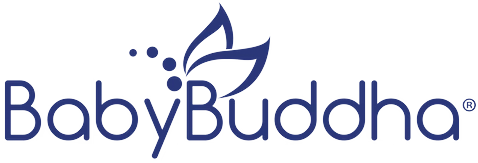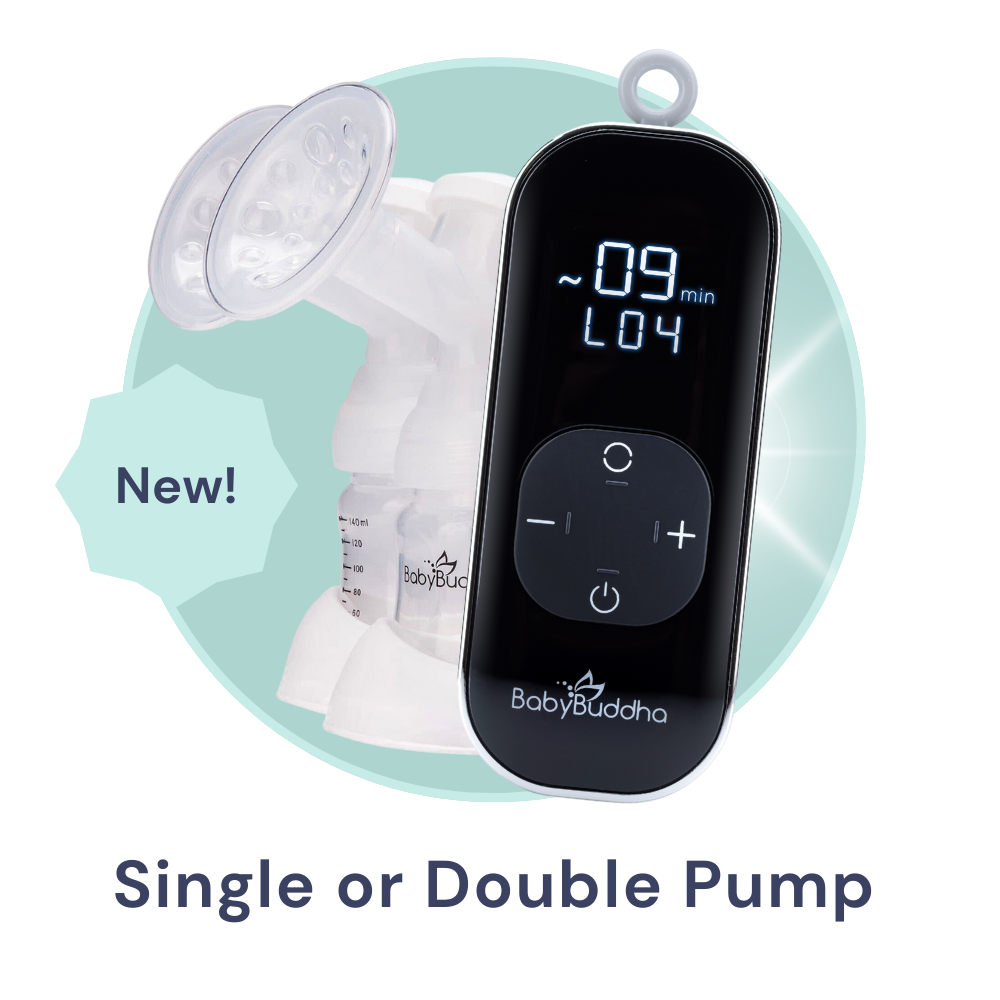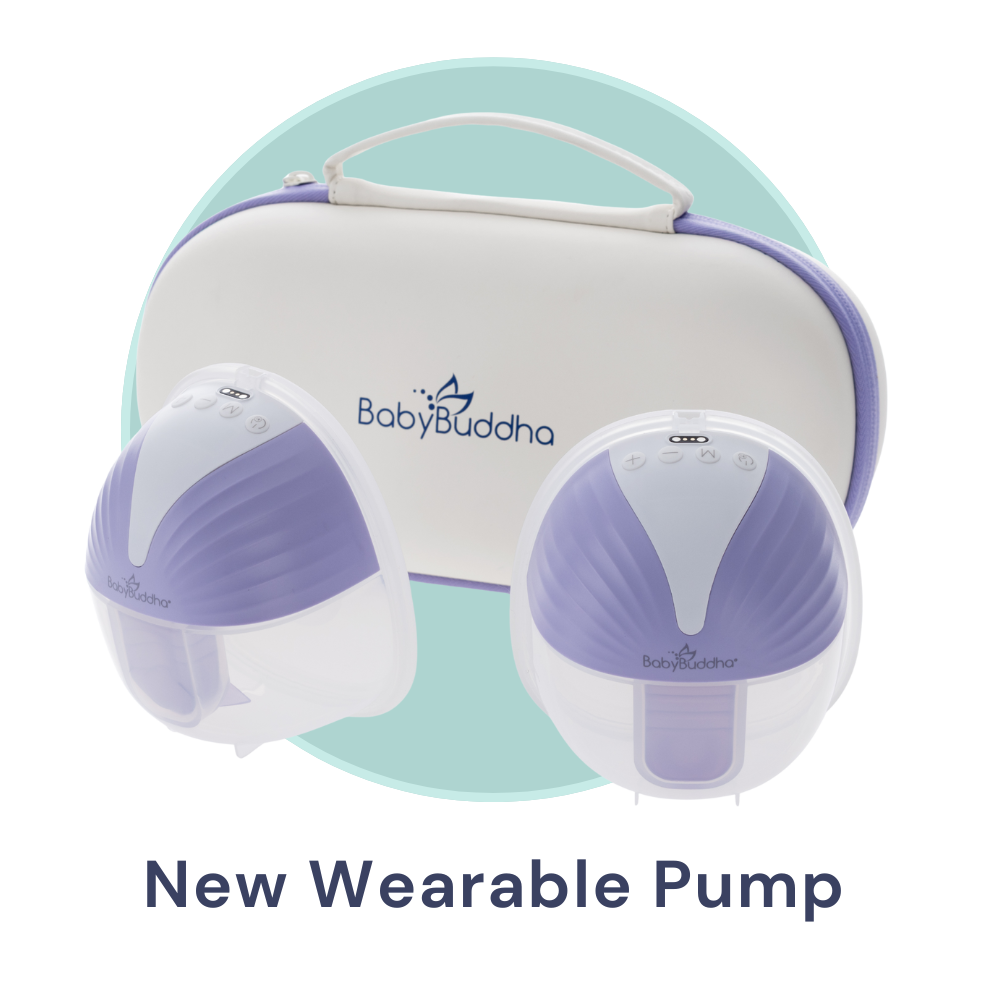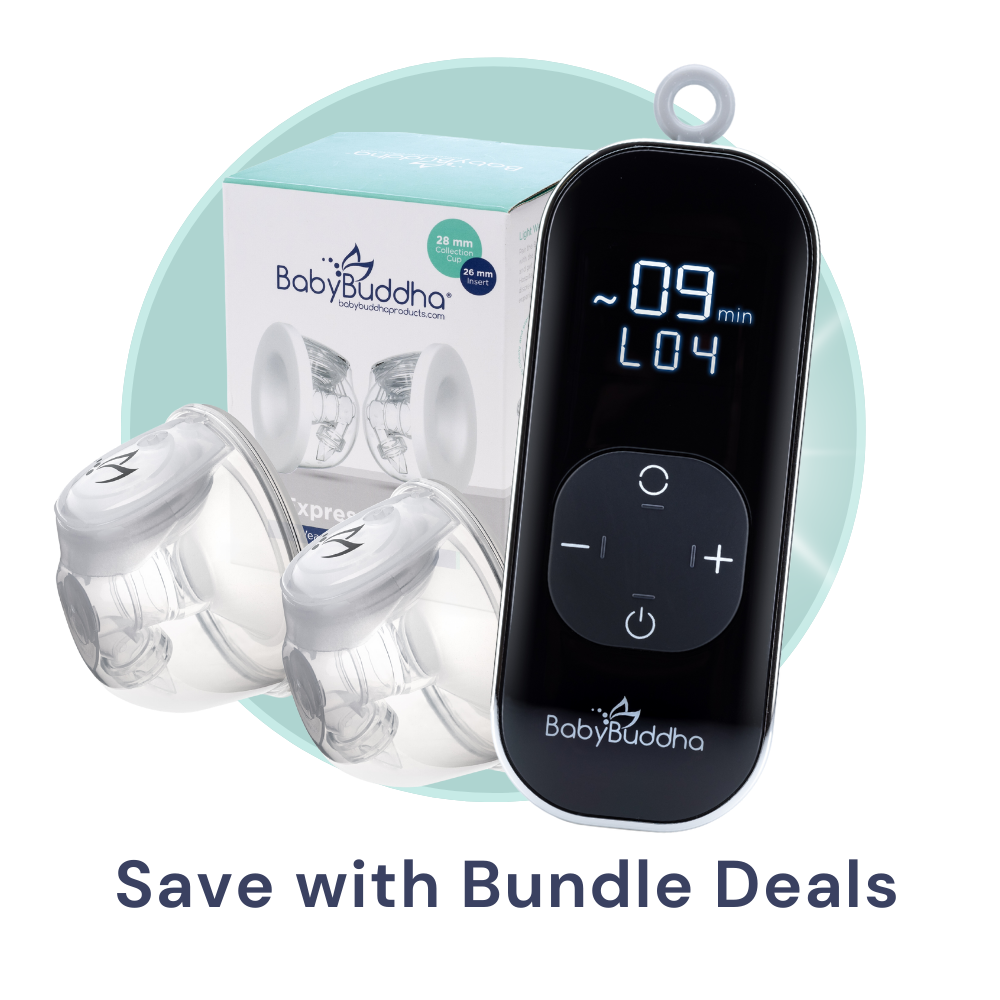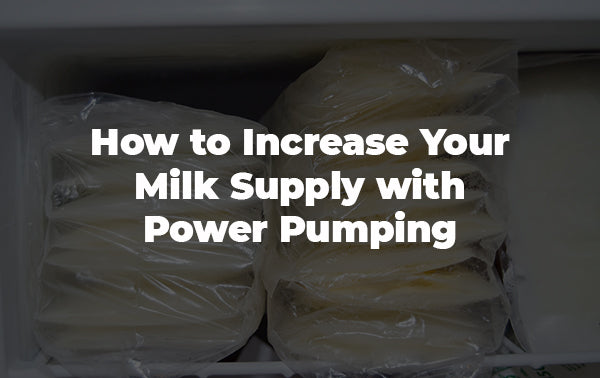Medically Reviewed By | Dr. Hope Lima, PhD, RDN, LRD, IBCLC
A new baby entering your life comes with many decisions. As a new parent, choosing between formula or human milk (or a combination of the two) for your baby’s diet can be complicated depending on your lifestyle, support system, or schedule.
There are many factors that may influence how you feed your baby. Before we get into the comparisons, it is important to remember that it is not all or nothing — feeding BOTH formula and human milk is an option as well!
Many mothers choose to feed using both formula and human milk. The black-and-white comparisons perpetuate the all-or-nothing mindset when it comes to breastfeeding. For example, sometimes, a parent might not be able to produce enough milk to cover all the baby’s needs, but that doesn’t mean she needs to feed 100% formula if she doesn’t want to. Any amount of human milk still provides infants with the benefits we’re about to review below.
Additionally, some families might benefit from donor milk. Non-profit organizations like the Human Milk Banking Association of North America (HMBANA) test and send out donated breast milk to infants in need.
Now that we’ve touched on those important notes, let’s cover the main differences between human milk and formula, as well as the benefits and drawbacks of each method.
Nutritional Value
Infant nutrition is one of the main concerns when considering your baby’s diet. There are significant differences in nutritional components when comparing formula and human milk. Both food sources include all of the nutrients necessary for your baby’s growth and development.
Vitamin D
Vitamin D is not actually an essential nutrient. Vitamin D can be synthesized in the human body from cholesterol when you are in the sun. For this reason, vitamin D levels in human milk are not strictly maintained by the mother’s body. Supplementation of the maternal diet can increase the levels of vitamin D in human milk. Sometimes the increase in vitamin D is large enough that the infant does not need any additional supplementation.
Additionally, infants are able to synthesize their own vitamin D. In many areas of the world, recommendations to maintain infant vitamin D are to spend short amounts of time outside getting sun exposure. Wearing your baby during the day is one way that your child can small amounts of passive sun exposure.
“For most children In the United States, the American Academy of Pediatrics recommends a vitamin D supplement,” clarifies Dr. Hope Lima, Lactation Expert, PhD, RD, IBCLC.
“While infant formula does have more vitamin D in it than human milk unless a child is consuming 1 liter or more of infant formula in 24 hours, a vitamin D supplement is recommended. Because of this fluctuation of the total amount of vitamin D passed through the milk or the mother not supplementingvitamin D for herself, the American Academy of Pediatrics (AAP) recommends that exclusively human milk-fed babies whose mothers are not on a high dose vitamin D supplement receive a vitamin D supplement to ensure their need is met,” Lima says.
Vitamin D supplementation is important until your baby is consuming either more than 1 liter of infant formula OR an adequate amount of vitamin D-rich foods after solids become a primary source of overall nutrition.
Health Benefits
There are many health incentives for your baby to consume their mother’s milk. The AAPrecommends exclusive breastfeeding for the first six months of life, and the World Health Organization (WHO) agrees. They also say that breastfeeding can have incredible benefits for the first year of the child’s life and beyond.
Antibodies
“Infant formula lacks some of the unique immunological benefits naturally produced in breast milk. The antibodies produced in colostrum and mature breast milk cannot be artificially replicated,” Lima highlights.
Consequently, it supports an infant’s immune system better than formula. Breast milk is not a stationary, set recipe — it can change and adapt to present flu or cold viruses, adjusting to provide antibodies specifically to guard against illnesses the mother comes in contact with.
Digestion
Human milk is easily digested by newborns because human milk contains enzymes that help babies break down nutrients! As a result, breastfed babies may suffer less indigestion, constipation, and diarrhea than formula-fed infants.
Allergies
Breast milk can help prevent allergies later on in life. A mother’s diet, when varied, can expose an infant to new allergens early on, bolstering their immune system.
“While prevention of allergies is a known benefit of human milk, some babies experience allergies to proteins that pass into human milk after the mother consumes them in her diet,” Lima says. The American Academy of Pediatrics estimates that approximately 2-3 percent of infants experience these types of reactions.
This can be managed by the mother, by adjusting her diet to remove the allergen the baby is having a negative reaction to. However, many infants outgrow these types of allergies before 1 year of age, especially sensitivities to cow’s milk.
Health Benefits for Moms
“Human milk provides unique health benefits for the individual who is producing milk, including physical and emotional benefits,” Lima highlights. With thepositive health outcomes for breastfeeding mothers, this is a major difference between infant formula and human milk feeding. .
The benefits for moms may include:
-
Reduced risk of diabetes, high blood pressure, and cardiovascular disease.
-
Reduced risk of ovarian cancer, breast cancer, and uterine cancer.
-
Faster uterine shrinkage postpartum, which reduces the risk of postpartum hemorrhage.
Time Commitment

Lifestyle plays a large role in choosing how to feed your baby. Infant feeding is a time commitment, and it can be challenging to balance other responsibilities, including caring for older children, work responsibilities, and family obligations.
There are time commitments that come with both breastfeeding and bottle feeding (whether human milk or formula). Formula and bottle-feeding require an up-front monetary investment in feeding supplies. Additionally, there is time that goes into sterilizing supplies and it takes a considerable amount of time to properly prepare infant formula. Formula also needs to be purchased on a regular basis, so there is a monetary investment on that end as well.
Human milk has some convenience factors that are different than formula, including being readily available if feeding at the breast. However, this increases time commitments, as breastfeeding mothers must be near their baby to feed or carve out specific time to be able to pump when they’re away.
A portable breast pump is a fantastic solution for breastfeeding mothers who still need the freedom to move, travel, or work outside the home or to support the decision to exclusively pump as a personal choice or necessity. There are many types of pumps to suit your individual needs to help make breastfeeding more convenient.
Hospital-grade breast pumps and in-bra wearable pumps are the most commonly used. The main difference is performance; hospital-grade strength is the strongest and best for milk removal and production. Wearable pumps are not quite as strong, but they can be more convenient and offer discretion to the user.
Pros of Using a Breast Pump:
- Can have a positive impact on milk supply
- Allows for the storage of excess milk
- Gives other caregivers a chance to step in and assist with feedings
- Supports the personal freedom and choices of breastfeeding mothers
Using formula or pumping and bottle-feeding your baby can be convenient for allowing other caregivers to step in and assist with feeding schedules. This can help to reduce the physical and mental load associated with meeting the continuous demands of a hungry newborn or baby.
Connection
Feeding your baby can be extremely gratifying regardless of how you choose to do it. It is fulfilling a connection and strengthens the bond between caregivers and baby.
While breastfeeding directly provides many opportunities for physical connection, skin-to-skin contact can encourage this bond whether your baby is breastfed or formula-fed. This can be practiced by parents and other caregivers while feeding, helping regulate breathing and temperature while establishing feelings of safety and security.
Support
It’s often said that it takes a village to help raise a child. This is no understatement when it comes to establishing a family, caring for newborns, and raising young children. Community is essential in this process.
Your support system may influence whether you choose to breastfeed directly or bottle feed. Bottle feeding with either breast milk or formula allows other caregivers to step in and assist with the process. If breastfeeding, using an electric or manual breast pump will be essential.
There can also be challenges associated with learning to breastfeed for mom and baby. “Depending on your access to skilled lactation support, this may influence your decision of whether or not to continue. For example, if you are struggling to get your baby to latch or have pain while adjusting to breastfeeding, you may require professional support. Sometimes this is a financial burden on families,” highlights Lima.
Extra support may come in the form of a health care provider or lactation consultant to help the baby learn to latch and teach effective techniques for breastfeeding. This can help ease the breastfeeding process for mom and baby.
Cost
Raising a newborn and starting a family is known as a costly endeavor. Expenses may influence your decision when deciding between breastmilk or formula.
Breastfeeding and Pumping Require Less Monetary Investment
Formulas must be made in a factory and purchased from a store. A year’s worth of standard infant formula costs upwards of $1,500. Specialty formulas can be double or triple this cost.
However, it’s important to note that while more affordable than formula feeding, breast milk isn’t really “free.” It can cost an average of $1,000 on the high end to purchase everything needed to breastfeed comfortably. These expenses can include things like nursing and pumping bras, bottles, or breast pump(s). Families may also see additional expenses if they need to purchase replacement parts, milk storage bags, or supplements.
When breastfeeding, a pump and its accessories may be critical in maintaining your feeding schedule. Luckily, the cost of some breast pumps and the replacement of components over time, as well as milk storage options, may be covered by insurance. This is one way to reduce costs associated with obtaining the supplies necessary for breastfeeding.
Formula vs. Breast Milk: Summary
Many factors may influence your decision to use formula or breastfeed your baby. Ultimately, you want to make an informed choice that is best for your family — understanding all of the pros and cons associated with each option. There are certainly some positives and negatives to consider about each food source and method:
Infant Formula:
- Infant formula contains all necessary nutrients for your child.
- Feeding formula eliminates the stress of maintaining steady milk production.
- Infant formula does not provide antibodies to the baby.
- Infant formula can be expensive or difficult to find in stores.
- There may be some adjustment while finding a good fit formula.
Human Milk:
- Milk is produced specifically to meet your baby’s nutritional requirements and provides all the necessary nutrients for your child.
- Breastfeeding provides health benefits for mom and baby.
- Breastfeeding can have lower overall monetary costs.
- The process of breastfeeding or pumping may be challenging at first until both mom and baby learn the process.
- Specific dietary changes for the mother or a vitamin Dsupplement for the infant are often necessary.
- Mom must be near her baby if exclusively nursing (using a manual or electric breast pump may provide freedom and options).
Final Thoughts for Now
Deciding whether to give your baby breast milk or formula leaves a lot to consider. Ultimately, you decide what will be best for you and your baby. There may be many factors that influence this choice.
The journey of feeding your baby can look so many different ways. Both breast milk and formula include the necessary nutrients for the growth of your baby. You are the only one who knows the right choice for you and your baby. Remember, the main goal is a healthy baby and a healthy mama.
Sources:
Breastfeeding vs. Formula Feeding (for Parents) | Nemours KidsHealth
Infant Allergies and Food Sensitivities | HealthyChildren.org
Should I Breastfeed or Bottlefeed? | HealthyChildren.org
Vitamin D | Breastfeeding | CDC
Breastfeeding and the Flu | Oklahoma State Department of Health
New evidence on how breastmilk prevents food allergies | The University of Western Australia
Breast-feeding is cheaper than the bottle but don't think it's free | USA Today
What to Know About Donating Your Breast Milk and Receiving Donated Milk | Verywell Family
